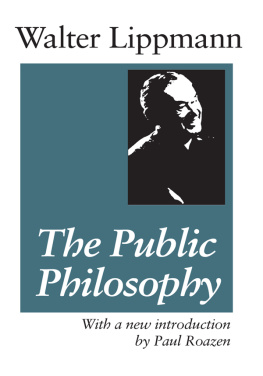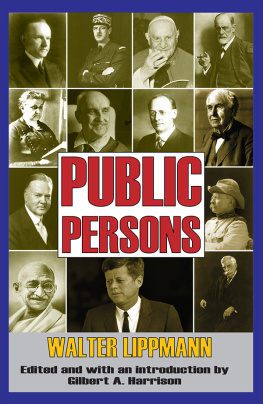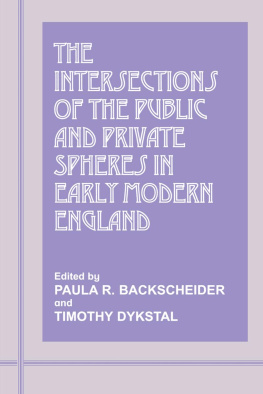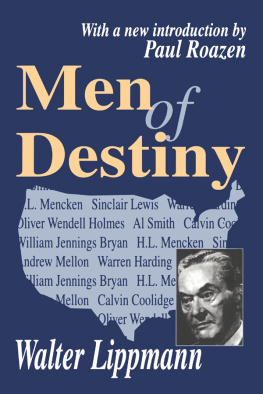First published 2001 by Transaction Publishers
Published 2017 by Routledge
2 Park Square, Milton Park, Abingdon, Oxon 0X14 4RN
711 Third Avenue, New York, NY 10017, USA
Routledge is an imprint of the Taylor & Francis Group, an informa business
Copyright 2001 by Taylor & Francis.
Augmented version of an issue of Daedalus, Summer 1998, copyright 1998 by the American Academy of Arts and Sciences.
All rights reserved. No part of this book may be reprinted or reproduced or utilised in any form or by any electronic, mechanical, or other means, now known or hereafter invented, including photocopying and recording, or in any information storage or retrieval system, without permission in writing from the publishers.
Notice:
Product or corporate names may be trademarks or registered trademarks, and are used only for identification and explanation without intent to infringe.
Library of Congress Catalog Number: 00-055981
Library of Congress Cataloging-in-Publication Data
Public spheres and collective identities / Shmuel N. Eisenstadt, Wolfgang Schluchter, Bjrn Wittrock, editors.
p.cm.
Includes bibliographical references and index.
ISBN: 0-7658-0714-9 (pbk. : alk. paper)
1. Social History. 2. Group identity. I. Eisenstadt, S.N. (Shmuel Noah), 1923- II. Schluchter, Wolfgang, 1938- III. Wittrock, Bjrn.
HN8 .P82 2000
306.09dc21
00-055981
ISBN 13: 978-0-7658-0714-4 (pbk)
THE HISTORICAL TIME PERIODS conventionally used to delineate the distinctive phases of European civilization are generally represented as ancient, medieval, early modern, modern, and contemporary. If such divisions are by definition Eurocentric, intended to describe real periods in European life as historians have imagined them, they cannot in their literal original European meaning be used also to define the changing civilizations of Asia. Yet if the dynamics of the major Asian societies, so diverse and complex, are to be made meaningful, it may be useful to think of how they developed when great parts of Europe, invaded from the east and the north, took on a wholly new character, becoming feudal and, in time, absolutist, predominantly agrarian but increasingly urban. While European (and American) historians have collaborated successfully to analyze the most minute aspects of European life during these centuries, what it meant for societies to experience the Reformation or the Renaissance (in its various permutations), and what the Enlightenment brought to societies only beginning to recognize the significance of the new sixteenth- and seventeenth-century science, there have been no comparable in-depth analyses of the civilizations of the East during these same centuries and how they changed.
This volume is concerned with early modernitiesthe term is significant, for it does not pretend that there was a single early modernity, and is intended to draw attention to a fact all too rarely acknowledged. While we know an enormous amount about the differences between England and France in both the medieval and the early modern periodsnational histories of individual European states are a staple even now in the historical literature of the late twentieth centurythere is no comparable general knowledge of Asian histories, describing and analyzing the differences between the principal civilizations of that vast region. This is not to say that scholars have neglected these civilizations or that their research has produced negligible results, but only that the kind of comprehensive scholarship about Europe that owes so much to the monographic studies initiated in the nineteenth century in the major universities of Europe and in the twentieth century both in Europe and in the United States has no precise equivalent for Asia. A glance at the holdings of the major libraries of the world, or at the articles that have appeared very recently in the principal learned journals, testifies to this condition. Those who have planned and written this collection of essays do not believe that this situation will continue very long into the twenty-first century. Indeed, this may be one of the more compelling reasons for choosing to deal with subjects treated in this volume.
To assert this is to argue something that may have very great importance. If scholarship in the natural sciences is today obviously international, and has become increasingly so since the end of World War II, with major contributions being made by scholars in many societies, some believe that the same is true in the social sciences. Yet it is a fact that Asia, like Africa and Latin America, figures less in major scholarly tomes than do either Europe or North America. Asian history, for example, is not a heavy industry in its intellectual, cultural, political, or social dimensions in the way that European and American history have been for a century and continue to be today. Even a cursory glance at the footnotes to the essays in this volume will suggest how much a handful of university and commercial presses in Europe and the United States are responsible for publishing the major studies on which scholars of Asia continue to depend. While that situation is not likely to change immediately, there are many reasons to believe that it will not continue for very long into the next millennium. To argue this is not to say that the Wests time of intellectual dominance is over, that the new century will belong to Asia and to Asian scholars who will transform the social sciences, calling attention to societies too little studied in the past. It is to say something more significant and less controversialthat the social scientific studies of the future are likely to take into greater account societies and religions, traditions and practices still too little known today, concealed from the West by many factors, not least the general unfamiliarity with the languages of the Asian world of yesterday (and today). To understand the relations between politics and culture in Asia in the precolonial period, for example, may be as important as knowing what happened after the advent of modern European imperial expansion in Asia, and may even help to explain much that remains distinctive about both worlds, still so very different.
If Public Spheres and Collective Identities reminds us that India, China, Japan, Korea, and indeed the whole of Southeast Asia merit our attention, that Spain has as much reason to interest us for what it reveals about the early modern period in Europe as France or England, that there is as much to be learned from a study of the German Enlightenment as from the French or the English, then it will have achieved one of its purposesto make us aware of how narrow many of our perspectives on the past have been. There is, however, another reason for believing this volume to be important. Today, when it is assumed that we understand contemporary nationalism and nation-building, rarely considering the very different traditions from which such state-building sprang, when there is almost too much discussion of the global village, with its uniformities and purportedly inevitable trajectories, there is a need for seeing modernity as something other than a single condition with a preordained future. The so-called democracies of the world today may be as different in their character and political, intellectual, and moral perspectives as were the societies of Asia and Europe in the second millennium of the Christian era. If this volume, despite the unfamiliarity of its scholarship for many readers in North America and Europe, helps to direct attention to new questionsthe triumph of the vernacular, for example, and the creation of public spaces allowing for critical discourse in societies sometimes superficially described by Western scholars as despotic or authoritarianit will give a new cast to what some believe to be the intellectual and institutional precursors to modernity. More than that, it could lead to a questioning of some of the more conventional analyses of the contemporary world.









